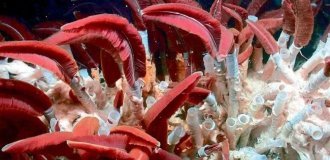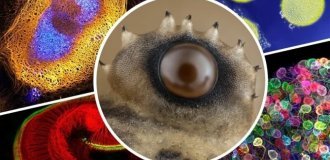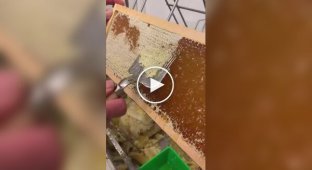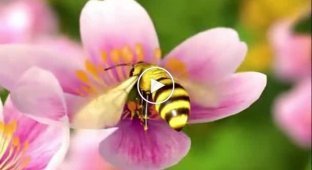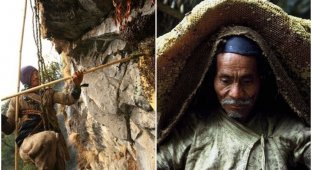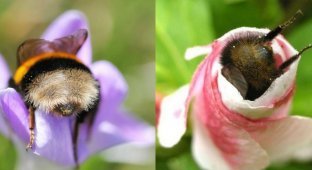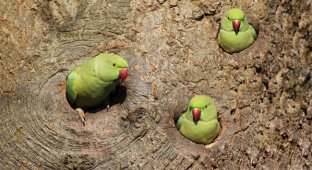The full cycle of honey production can be divided into several stages. 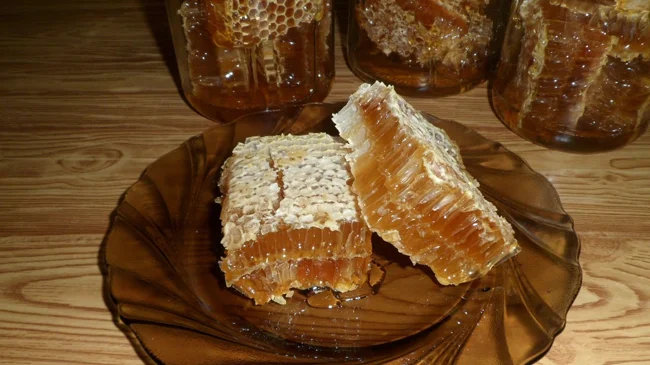
I'm starting to salivate.
Over tens of millions of years, the craft of honey production has accumulated so many nuances that they have turned the routine collection of reserves into a highly productive biotechnological production, allowing a family to obtain up to 50 kilograms of honey every year, even in our latitudes!
You, of course, know that bees store honey in hermetically sealed wax combs, which are opened only when needed. But their construction is not such a simple task. Honeycombs are built only by bees aged 12 to 18 days, because younger workers are not developed enough and their wax glands do not function yet. And older insects work outside the hive, and their wax glands decrease in size. However, in the spring, the overwintered bees participate in the restoration of the hive on an equal basis with the young ones. 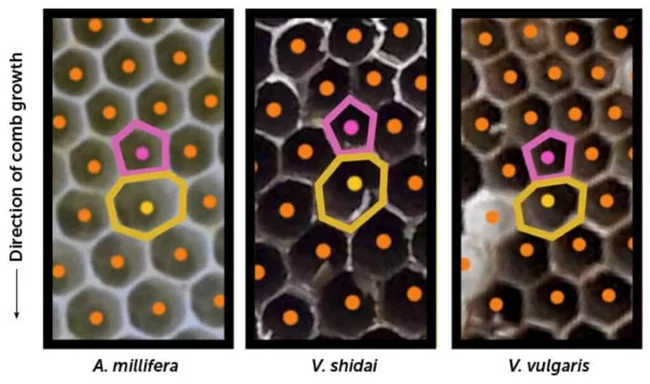
Sometimes bees build pentagonal or heptagonal honeycombs. But this is not a mistake, but a necessity. With the help of such honeycombs, they compensate for differences in height and the difference in cell sizes. In terms of volume, distorted honeycombs correspond to the bee GOST.
Their wax glands produce microscopic - less than a microgram - plates, which are then softened by the mandibles and front legs to an amorphous, pliable mass. This mass is used to build hexagonal cells. When the wax is shaped, it hardens again and turns into a reliable building material. 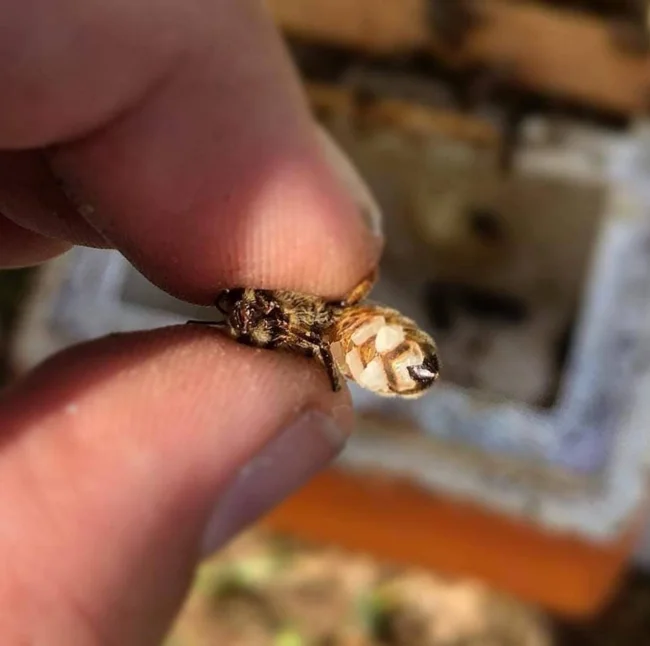
The very plates produced by the wax glands.
Stage 1: Reconnaissance
While the young hive bees are busy building, adult foragers fly within a radius of 2-3 kilometers from the hive in search of food. Having found a source of goodies, the worker returns home and tells about it through dance. Through dance, the bee transmits information about the direction, distance and amount of nectar. And depending on this, a certain number of worker bees are sent to the collection point. 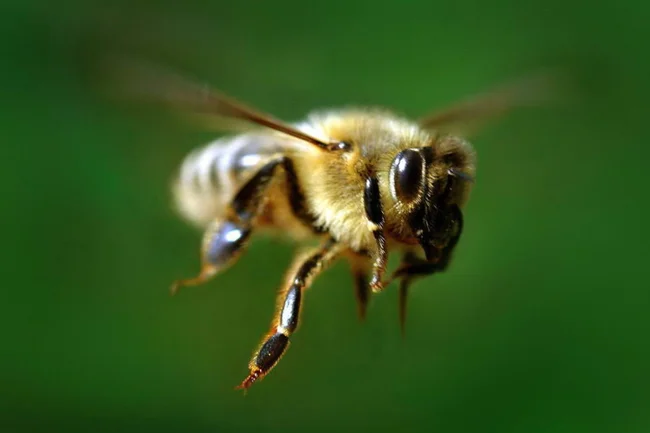
Other social insects - ants and termites - navigate in space with the help of pheromone marks. But bees have to remember large landmarks and determine their location by the sun. And they do all this with such a tiny brain!
The bee dance is very complex and only partially genetically programmed; it needs to be learned. Therefore, future foragers first watch the dances of their older comrades, then learn to follow their instructions, and only after that begin to dance on their own. This behavior leads to the formation of unique cultural characteristics. The dances of two hives, although similar and built on the same principles, can differ in nuances. 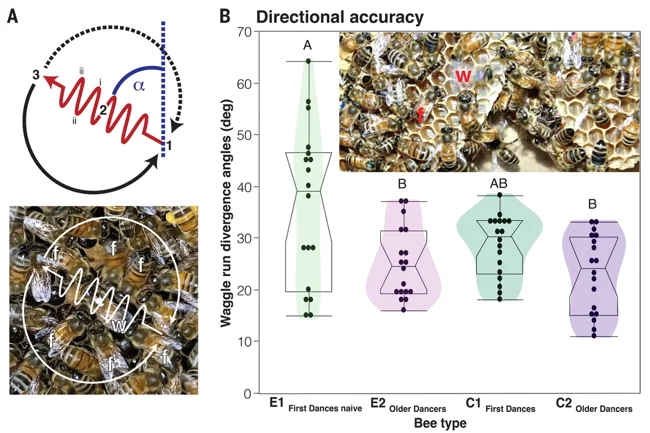
On the left is a classic bee dance pattern, and on the right are variations of the zigzag "walk" in different individuals. E1 are bees dancing for the first time, who had no one to teach them. E2 — the same, but with some experience. C1 — these are bees dancing for the first time, who have gained experience from their older comrades from the C2 category.
Stage 2: Collecting Nectar
So, the location of the nectar patch has been determined, the workers have flown out. What's next? Next, the bee finds the flower by smell and licks the nectar with a special tongue. The tongue, by the way, is a deep modification of the lower lip — insects are quite different from us in this regard. 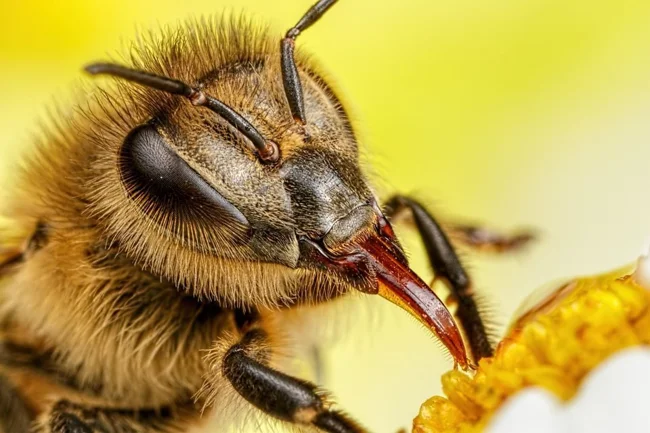
If only such a tongue could sip honey! Ah... Well, yes...
The collected nectar goes into the bee's crop - an expansion of the esophagus before the stomach, where it is not absorbed into the blood and is not broken down by digestive enzymes. The maximum capacity of the crop is about 50 milligrams - and this is nectar from dozens of flowers. It is also worth considering that the bee will consume up to a quarter of the collected nectar itself. It needs to eat something. 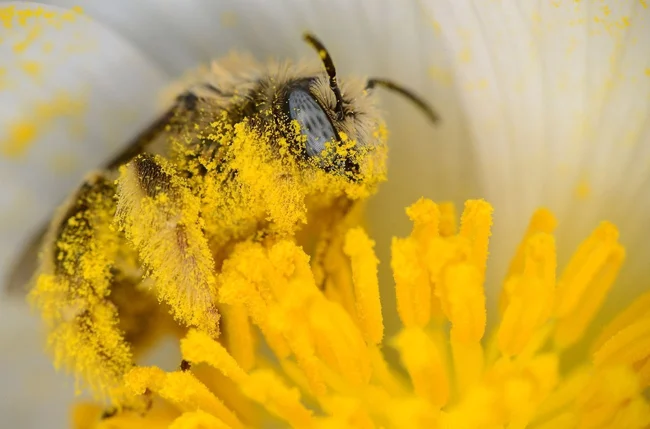
When you drop an open bag of chips on yourself.
Having filled the crop or depleted the nectar reserves in the clearing, the bee goes home. And here it is worth paying attention to a rather obvious problem: flower nectar and honey are two completely different substances, and to transform one into the other, you need to spend a lot of effort. Therefore, returning to the hive, the bee passes the nectar to its younger sisters 12-18 days old. They are engaged in processing the nectar. 
The expanded crop can occupy most of the abdomen.
The processing lasts several days and also takes place in the crop. Through its walls, the bee removes excess moisture and at the same time secretes many enzymes inside for processing and sterilizing raw materials. The main one is the invertase enzyme, which breaks down sucrose into glucose and fructose. Other enzymes have a pronounced antimicrobial effect or break down impurities into vitamins and biologically active substances. 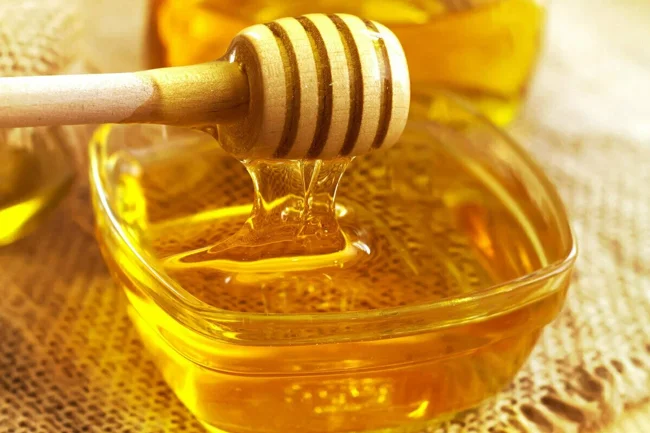
The water content in honey should not be more than 21%, 2-2.5 times less than in nectar.
Stage 4: Drying and storing honey
Yes, and here too there are nuances. If a bee simply pours the contents of its stomach into a cell and seals it with wax, it will definitely ferment, because there is still too much moisture in the honey. Therefore, the insect first squeezes a few drops of honey onto the walls and blows them with a stream of air using quick movements of its wings. When the droplets dry up, the bee drives them to the bottom of the honeycomb. 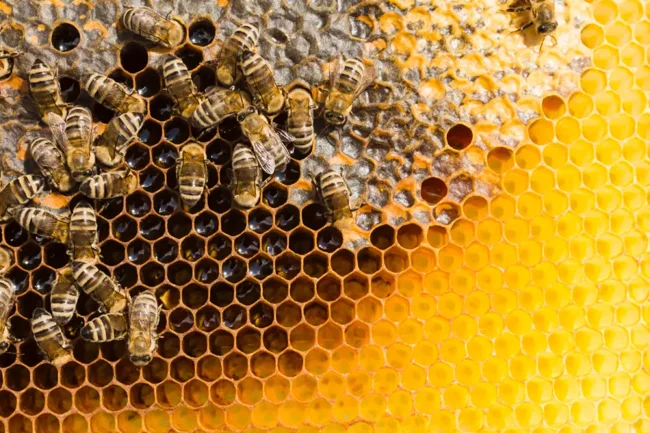
The harvest is preserved in jars.
But that's not all. Young honey must first ripen and thicken in the air. Then another bee collects honey from several cells into one, thereby mixing it. This operation is repeated several times - this way the honey averages out in its chemical composition. And only after all these manipulations is it placed in the honeycomb and closed with a wax lid.
Add your comment
You might be interested in:
